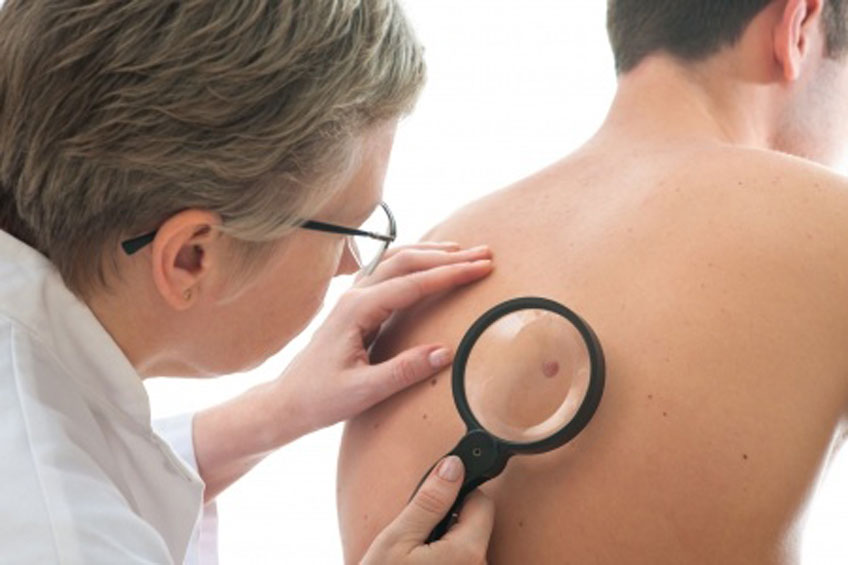
Skin cancer is one of the most common types of cancer and one of the easiest to identify. Unlike other cancers that develop unseen, skin cancer generally results in physical symptoms you can see on the skin. Skin cancer can develop on nearly any part of the body, from your scalp down to your toes. It can even develop in places that don’t normally receive sunlight, such as the inside of your mouth.
The best way to identify skin cancer is to perform a self-check or have your partner check your body for you. Get into the habit of checking the skin for changes, especially the development of new moles or changes to existing ones. Moles can vary in shape, size, and color, with the most common being variations of pink, red, brown, or black. Moles can also be raised or flat.
Although the vast majority of moles are healthy, there are circumstances in which a mole could indicate a more serious condition. There are three main types of skin cancer that a person can develop. These include:
- Basal Cell Carcinoma – Basal cell carcinoma (BCC) is a type of abnormal growth that occurs on the skin’s basal cells on the outermost layer of the skin. This type of skin cancer generally develops in areas that receive sunlight, such as the face, scalp, neck, ears, and back.
- Squamous Cell Carcinoma – Squamous cell carcinoma (SCC) is a type of uncontrolled growth of abnormal cells that develop from the squamous cells. This type of sun cancer is also common in sun-exposed areas of the skin, such as the ears, neck, hands, and face.
- Melanoma – Melanoma is a type of skin cancer that develops from melanocytes, the type of skin cell responsible for producing melanin pigment which gives skin its color. Melanomas typically resemble moles and can appear on any area of the body. This skin cancer is often caused by intense, intermittent sun exposure.
Skin cancer can take on a variety of appearances. It may appear as a changing mole or a mole that looks different than other moles you may have. It can also appear as a dome-shaped growth or scaly patch on the skin. Skin cancer can even appear as a non-healing sore or a sore that heals only to return later. You can also develop skin cancer under your fingernail, typically appearing as a black or brown streak.
When examining a mole, there are several characteristics you’ll want to look for. These are referred to as the ABCDEs of skin cancer:
- A – Asymmetry: One half of the mole appears different than the other half.
- B – Border: The edges or border of the mole appear blurred, ragged, or irregular.
- C – Color: The mole has several colors in it or several shades of red, white, blue, black, tan, or brown.
- D – Diameter: The diameter of the mole is larger than the size of a pencil eraser.
- E – Evolving: The mole looks different than other moles and is changing in color, size, or shape.
It is important to understand the risks and causes of skin cancer to reduce your risk of long-term health complications. Most non-melanoma skin cancers are caused by sun exposure. This could be due to long-term sun exposure, short-term or intense sun exposure, or sunburns. The older a person is, the more likely they are to develop non-melanoma skin cancer. However, skin cancer can also develop in younger people.
People who have had skin cancer in the past are at a greater risk of developing it again. In addition, you are at a greater risk of getting skin cancer if you have a family history of the condition.
Dr. Tasreen Alibhai





